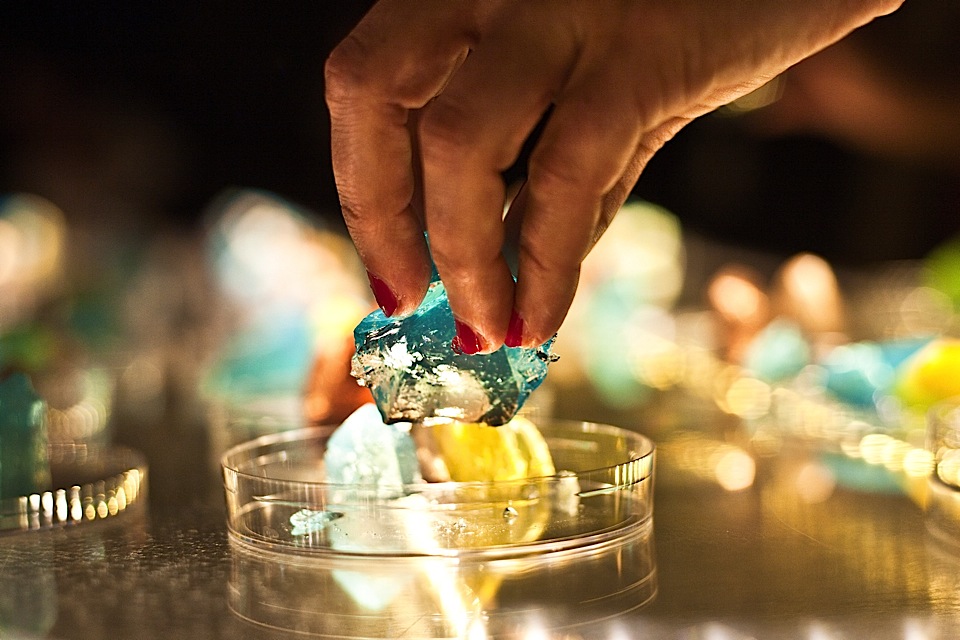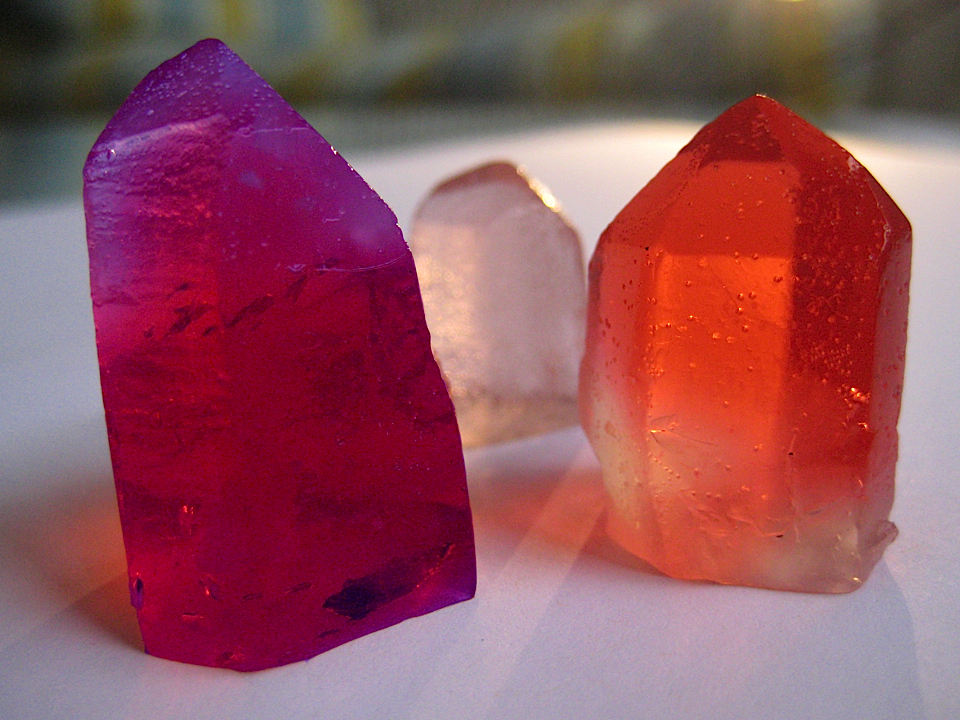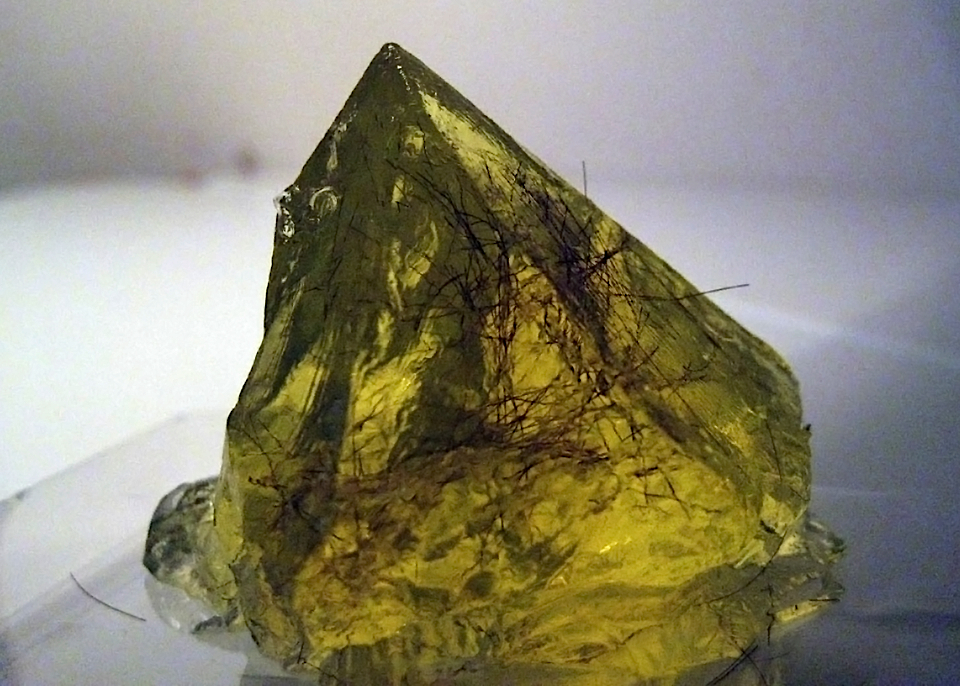EARTH MATTERS
emily candela

photo courtesy of emily candela
Dimitra Sotirchos is a trendwatcher specializing in fashion, arts & culture. With an MA in Innovation for Trend forecasting, she is currently developing a visual arts practice studying Environmental Art at The Glasgow School of Art. She has contributed to AnOther magazine and Dazed Digital and is also involved with the electronic dance music In London and loves yoga, currently training in Ariel yoga.
Artist Emily Candela purposefully meddles with the ambiguous art of cosmetic medicine and hi-tech beauty trends through her edible artworks ‘krustapseudicals’.T here is a growing obsession with mortality and the visible signs of ageing. Realities of an organic ageing cycle can be escaped through a galaxy of cosmeceutical dolls.
I spoke to Emily to find out more about her unconventionally beautiful crystalline objects.
Where does the interest in Cosmeceuticals and beauty as a material & subject come from?
I’m fascinated by the blurry line between what is living and what is not. I’m also interested in attitudes toward aging in the society I live in. Many beauty products promise a reversal or halt to the aging process that seems to respond to a desire, in effect, to be more crystalline than organic. To be frozen in time. I borrowed the prefix for krustapseudical from the Greek krustallos, for ice (which also lends its name to ‘crystal’).
What was your process for developing the crystals?
The krustapseudicals are crystallizations of beauty advice found in magazines. So they contain materials that are advertised as stalling the effects of aging on skin, hair or teeth – materials like vitamins, small amounts of minerals, proteins (via my own hair) and edible quantities of ointments for skin or lips. Other ingredients that go into the krustapseudicals are more poetic, reflecting the ideas or images associated with beauty and agelessness, such as gold and materials from the ocean.
I have developed several krustapseudical recipes; each one is concocted and then cast into the forms of real crystals. They have the consistency of jelly and feel rather ‘organic’ to the touch, even though they appear to be as solid as gems.
What message did you hope to convey through the crystals?
I’m not interested in producing a black-and-white critique of an industry or pointing out whether or not a certain type of product is marketed dishonestly. Rather, the project is about what the creations of the cosmetics industry tell us about ourselves and how we think about life and death.
But krustapseudicals are ultimately about the experience of putting something in your body. They convey what any type of food, pill or vitamin does: an experience of ingestion that may or may not come along with a response to what is in it, whether that response is critical, anxious, relieved, satisfied or repulsed.
You created exhibited the work at the science-meets-art event ‘Does Dark Matter’ in London, were they a culinary success at the exhibition?
What surprised me most was how trusting visitors were of me. More people ate the krustapseudicals than I had anticipated, given the semi-edibility of some of their ingredients. I went through hundreds on the evening.
What are you currently working on?
My art practice is now moving in the direction of involving more interaction with scientists. I’m happily turning in the lone-artist mode of working for one that’s more collaborative. In fact, a current project involves me literally dispersing myself through the distribution of materials from my body. I’m also absorbed in my research into the interface of design and science, which I’m pursuing through an AHRC Collaborative Doctoral Award between the Royal College of Art and the Science Museum.
There is a trend for collaboration and power in artist collectives. What artist collectives in London do you hold in regard at the moment?
Cosmicmegabrain are working in a truly exciting way, ignoring the outdated boundaries between visual art, music, cultural research, theatre, and science. I’m looking forward to what they do next.

photo courtesy of emily candela

photo courtesy of emily candela

photo courtesy of emily candela

